
President Harry S. Truman’s decision to drop atomic bombs on Hiroshima and Nagasaki set the groundwork for an era of U.S. global hegemony and enriched corporations like General Electric, DuPont, Union Carbide, Bechtel and Westinghouse which made hundreds of billions of dollars developing generation after generation of “first-strike” nuclear weapons.
U.S. leaders, intent on provoking wars with China and/or Russia, appear willing to use these weapons again—if we don’t stop them.
The atomic bombings of Hiroshima and Nagasaki, 77 years ago, marked the crucial turning point in the history of the 20th century. By the end of World War II, Europe, the Soviet Union and the Japanese Empire lay in ruins, and the United States was in a position of unprecedented power with sole possession of the Bomb.
Unfortunately, the U.S. used this power to launch the Cold War against the Soviet Union, and initiated a nuclear build-up that has impoverished the entire world and brought us to the brink of nuclear oblivion. The question remains: Why did the U.S. government decide to initiate the Cold War with the atomic bombings instead of pursuing a course of diplomacy and negotiated settlement?
There is broad consensus among serious historians that the atomic bombings were not necessary to end the war with Japan. By 1945 Japan was a destroyed and starving nation desperately seeking a negotiated surrender and the Soviet Union was preparing to enter the Pacific war in early August, eliminating the need for an invasion of the Japanese mainland. For the Truman administration, the use of the Bomb served two purposes: a demonstration of the terrible power of the split atom to be held against the entire world, and a means to deny the Soviet Union a major role in the post-war settlement.
On August 6 at 8:15 a.m. (August 5, 7:15 p.m. EDT), Hiroshima was annihilated in a flash by a single uranium bomb. Three days later, on August 9, and one day after the Soviets entered the Pacific war, Nagasaki was likewise eradicated by a plutonium bomb. More than 200,000 Japanese civilians and Korean laborers were slaughtered unnecessarily to expedite the promotion of U.S. foreign policy throughout the world.
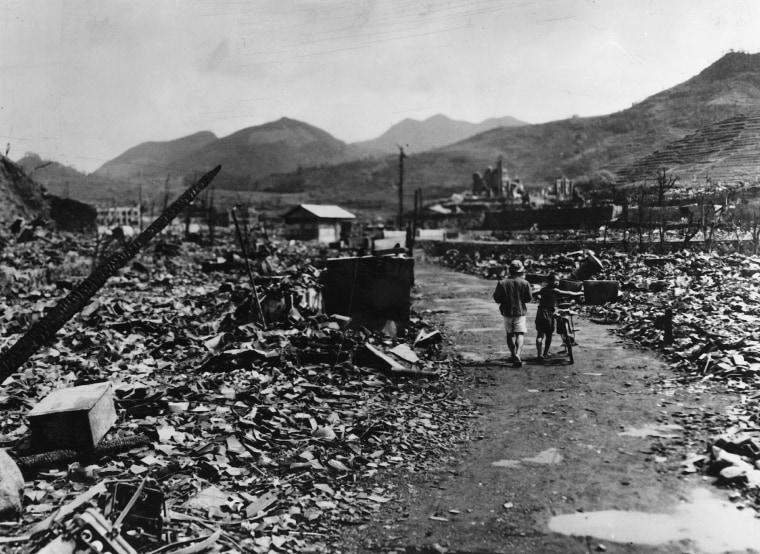
But to truly understand the decision to use the Bomb and initiate the Cold War, it is crucial to understand who benefited the most. The big winners were the claque of corporations which stood to “make a killing” if the U.S. were to initiate a massive nuclear build-up and launch a Cold War. Corporations led by General Electric, DuPont, Union Carbide, Bechtel and Westinghouse made hundreds of billions of dollars developing generation after generation of “first-strike” nuclear weapons and “conventional” weapons.
The entire spectrum of Corporate America applauded the government policy of using military force and nuclear threats to compel a dependable supply of cheap labor, cheap natural resources and markets, primarily from impoverished Southern Hemisphere nations.
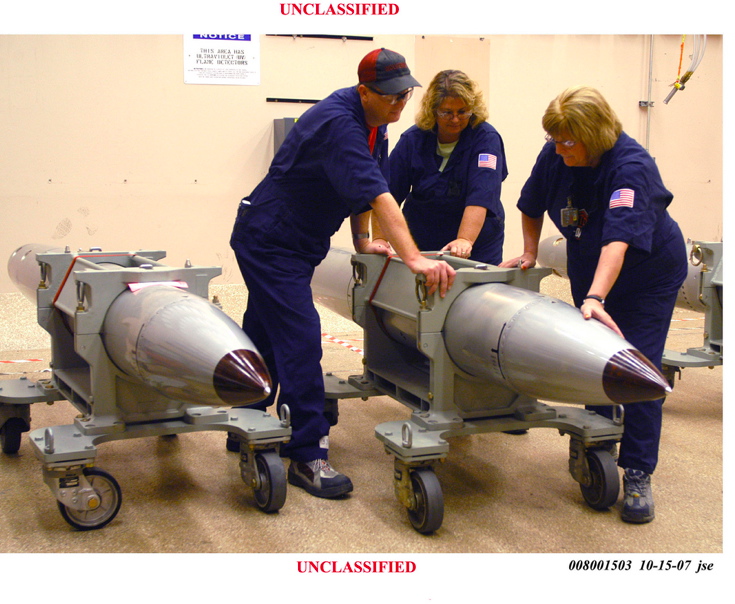
In 1945, the U.S. launched a first strike with atomic weapons against Hiroshima and Nagasaki to consolidate and advance its unprecedented position of economic, political and military power.
Today, the U.S. remains resolutely prepared to do precisely the same!
Its strategy has been and continues to be to threaten use of nuclear weapons to advance U.S. interests and, if deemed necessary, to launch a first strike. In the words of the Joint Chiefs of Staff rebuttal to Jimmy Carter’s 1977 proposal to reduce the U.S. nuclear arsenal to 200 warheads, “U.S. nuclear strategy maintains military strength sufficient… to provide a war-fighting capability to respond to a wide range of conflict in order to control escalation and terminate the war on terms acceptable to the United States.” [1]
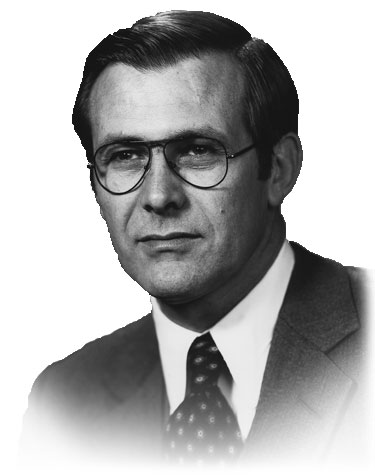
And, in the 1977 Nuclear Posture Review, submitted on Jaunary 14, 1977, outgoing Secretary of Defense Donald Rumsfeld wrote: “The most ambitious (damage limiting) strategy dictates a first strike capability against an enemy’s strategic offensive forces which seeks to destroy as much of his megatonnage as possible before it can be brought into play. An enemy’s residual retaliation, assumed to be directed against urban-industrial targets, would be blunted still further by a combination of active & passive defenses, including ASW (anti-sub), ABMs, anti-bomber defenses, civil defense, stockpiles of food & other essentials, and even the dispersal & hardening of essential industry.”[2]
Following Hiroshima and Nagasaki, U.S. nuclear policy continued to be first strike, at least up to the signing of the Anti-Ballistic Missile (ABM) and the Intermediate-Range Nuclear Force (INF) treaties which, for the first time, actually raised the threshold for the use of nuclear weapons. The ABM and INF treaties were, arguably, the most important arms control treaties because they both raised the threshold to nuclear war and, at that time, marked the beginning of a tentative retreat from a first-strike strategy. It is no coincidence that both of these nuclear risk-reducing treaties have been abrogated by the U.S. in its pursuit of global hegemony in the face of a rapidly emerging multi-polar world.
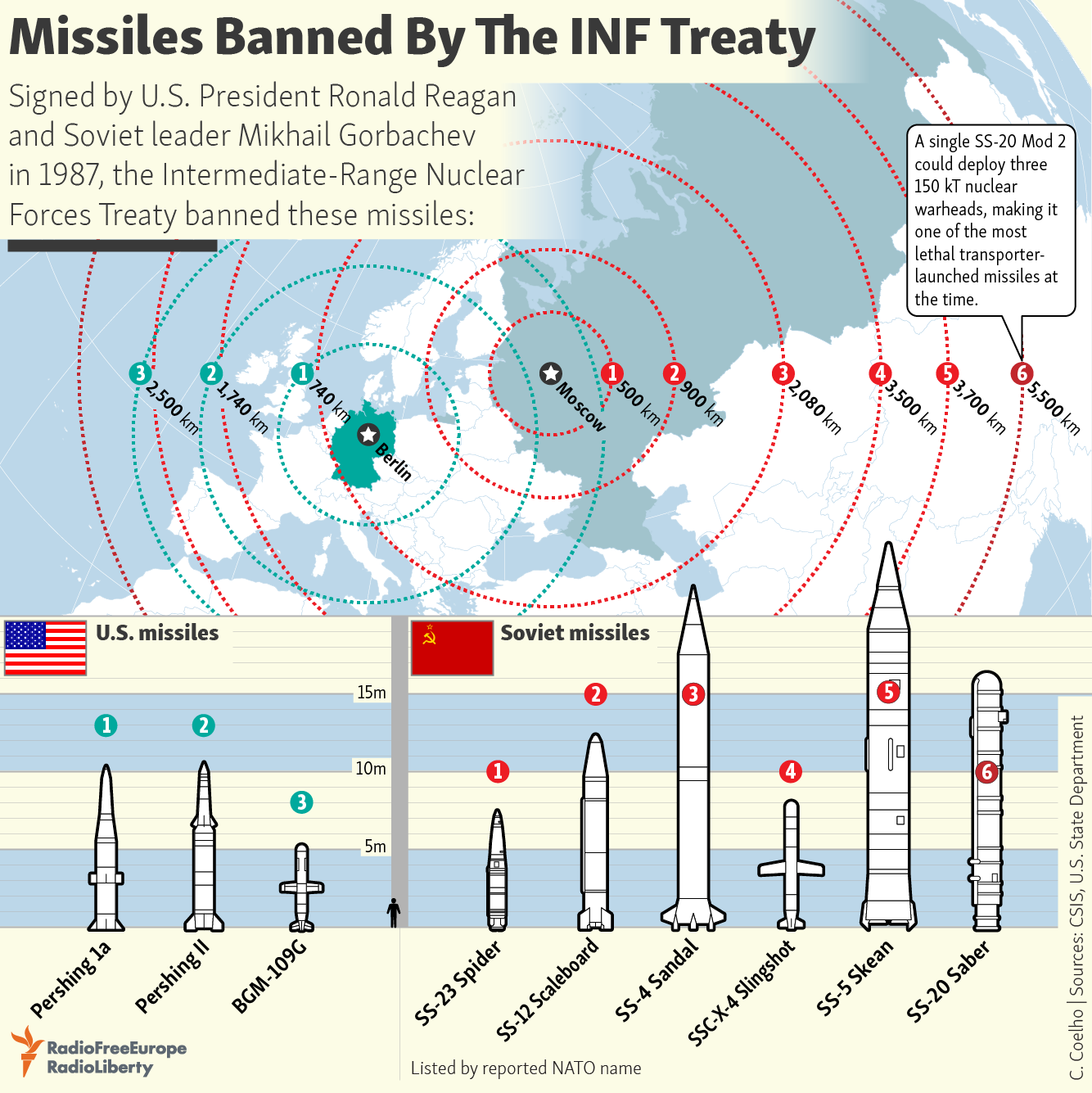
Analysts like Arjun Makhijani, Daniel Ellsberg, and Michio Kaku have pointed out that the U.S. government has threatened to use nuclear weapons dozens of times since Nagasaki, usually against Third World nations exercising their rights to self-determination. They argue that, from the beginning, the central function of U.S. nuclear weapons has been as a primary foreign policy instrument, and not for deterrence.
Ellsberg explains: “Again and again, generally in secret from the American public, nuclear weapons have been used: …in the precise way that a gun is used when you point it at someone’s head in a direct confrontation, whether or not the trigger is pulled.”[3]
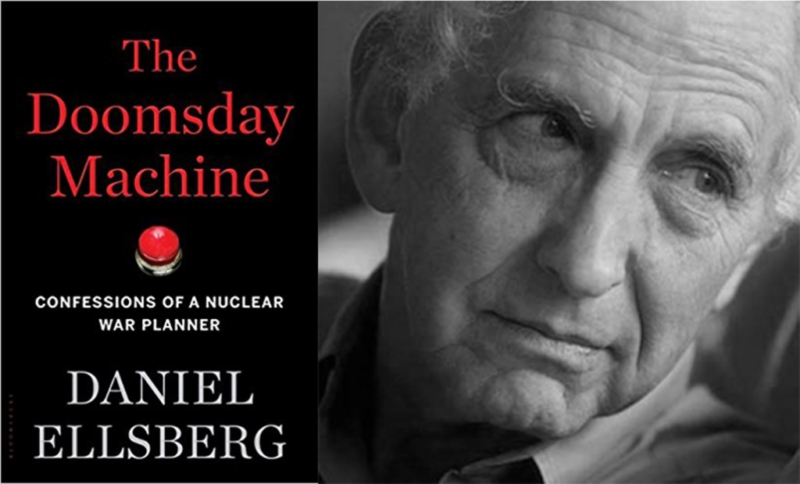
Why Hiroshima and Nagasaki Matter Today
Although the number of nuclear weapons has been reduced to about 13,000, today’s weapons are vastly more accurate, sophisticated and usable. Scientists estimate that even a tiny fraction of these weapons, as few as a hundred, if detonated against cities would result in a global nuclear winter and countless deaths.[4]
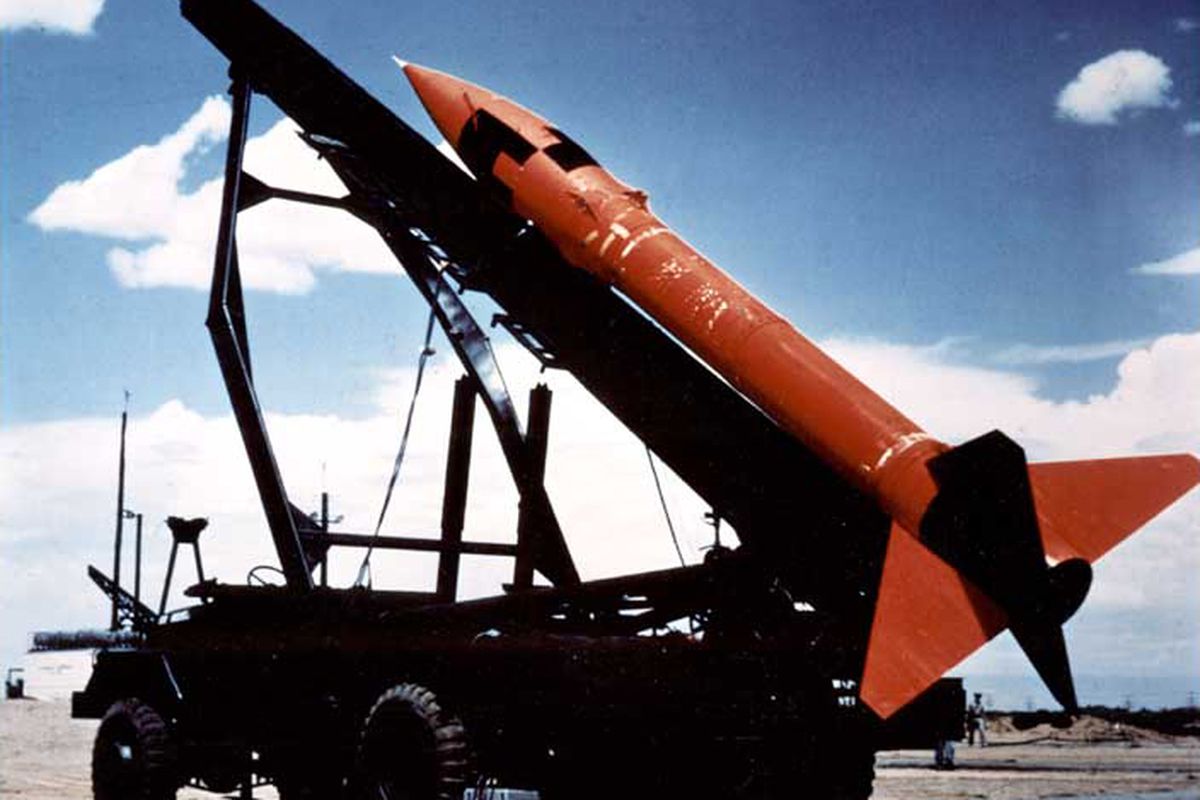
Currently, the Bulletin of the Atomic Scientists’ Doomsday Clock is set to 100 seconds to midnight, the closest ever. This is in part due to the existential threat posed by climate change, but also to the current radically lowered threshold to nuclear war posed by a range of factors including the U.S.-Russia proxy war in Ukraine, rapidly deteriorating U.S.-China relations, the emergence of a multi-polar global economy rapidly replacing U.S. hegemony, the end of the era of plentiful and cheap fossil fuels and other critical resources, and the absence of the ABM and INF treaties. In the words of U.N Secretary-General António Guterres, speaking during opening ceremonies of the 2022 NPT Review Conference, “Today, humanity is just one misunderstanding, one miscalculation away from nuclear annihilation.”[5]
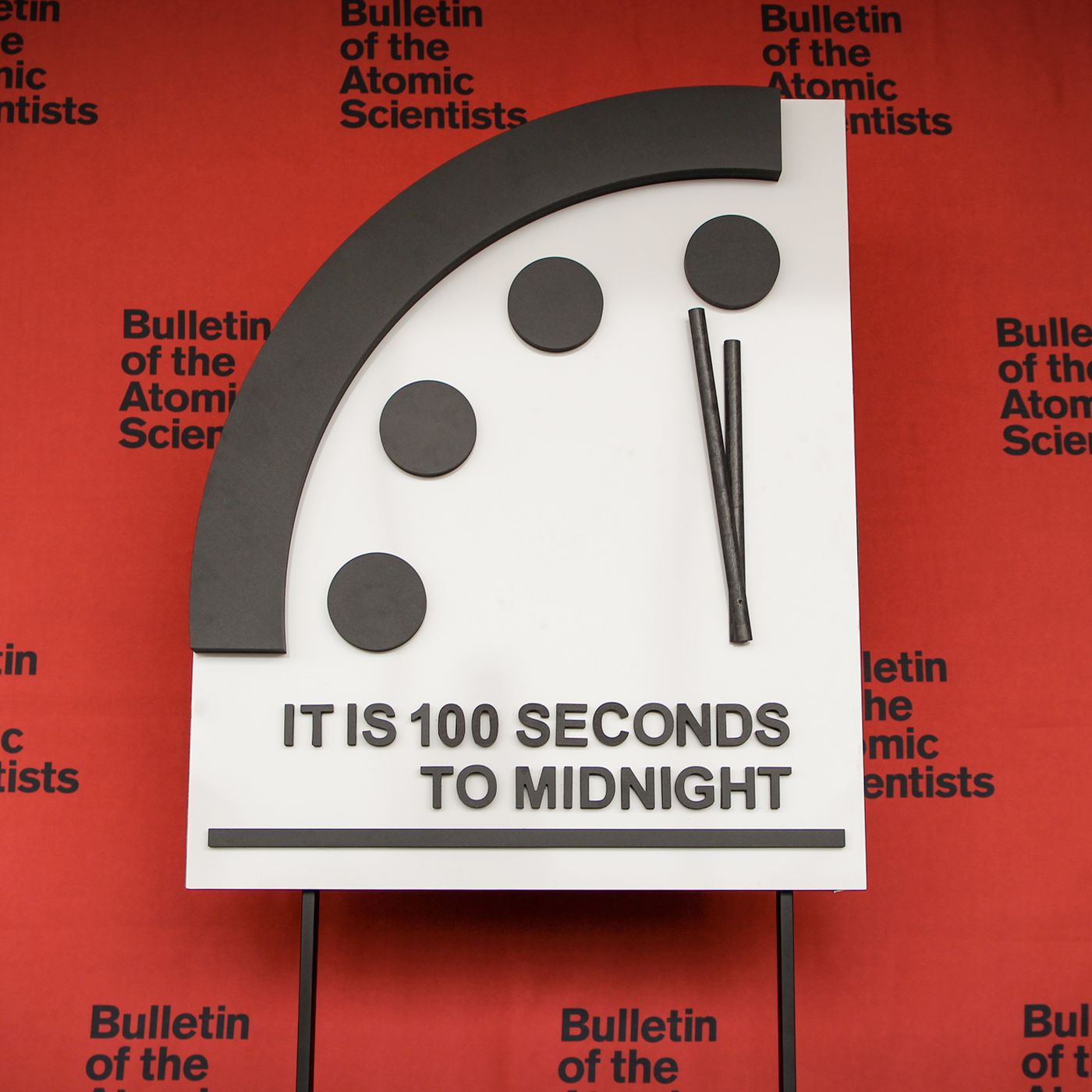
Nuclear war is more likely because of military interventions caused by increased regional resource wars and conflicts such as the current conflict in Ukraine. As resources dwindle, we can expect to see more and more regional conflicts, any one of which can quickly devolve into nuclear war. With the two most important nuclear weapons treaties gone, and the Treaty on the Non-Proliferation of Nuclear Weapons (NPT), currently under review, there is little to prevent a regional conflict from “going nuclear.”
Absence of the ABM or INF treaties, and NATO expansion up to Russia’s borders leaves U.S./NATO and Russia face to face, each side with nuclear weapons poised to launch on warning. If either side felt threatened enough to launch a nuclear missile, the warning time would be about five minutes. Russia considers this situation to be existential to its survival and has made this “Red Line” clear for the past 30 years, including under Yeltsin.
The sanctions imposed on Russia by the U.S. and NATO since February 24, 2022, were intended to quickly collapse the Russian economy and isolate Russia from the rest of the world. The results have had a spectacular opposite effect. While the value of the ruble has dramatically strengthened, Russia has reached out to nations like China, India, Iran and others to establish new trade agreements and alternative payment arrangements.
Meanwhile, the European Union is suffering economic blowback from the sanctions, with rising inflation and the prospect of a freezing winter without affordable fuel. The inexorable emergence of a multi-polar world to replace U.S. hegemony has been accelerated by the sanctions. It is exceedingly unlikely that the U.S. will willingly accept this change in the global status quo, a likelihood that portends future clashes.
Global climate change adds to the political instability and, itself, lowers the threshold to nuclear war. Scientists warn that, unless radical reductions in greenhouse gas emissions occur within the next decade, the consequences are catastrophic. We already see millions of climate refugees crossing political borders to escape the changing climate.
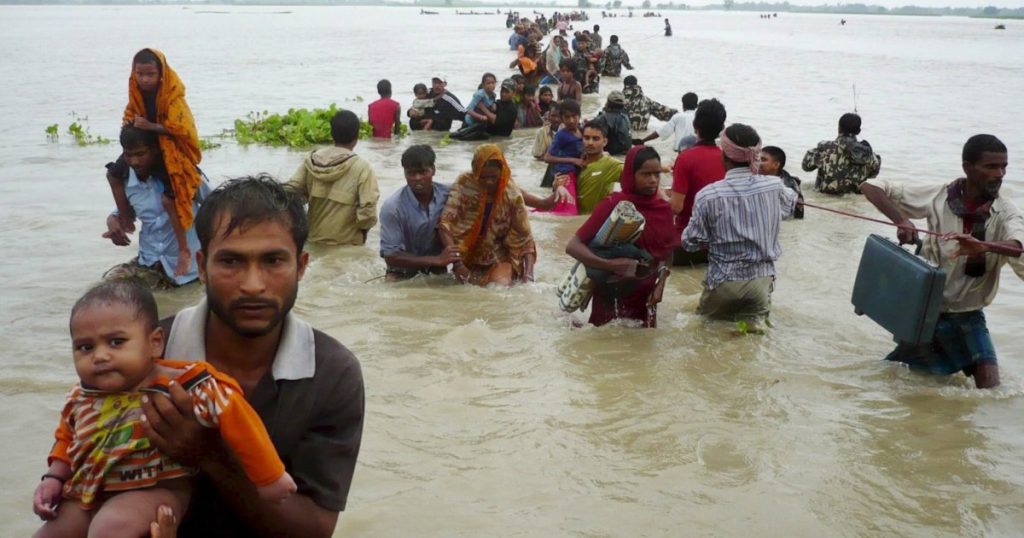
It seems like every day there is a new flood, drought, hurricane or other “thousand-year” event. With adversarial nations like India and Pakistan each possessing hundreds of nukes, and Israel possessing hundreds of nuclear weapons and a sophisticated delivery system with which to threaten its neighbors and even Moscow, the slightest incident could trigger a nuclear attack. (Jonathan Pollard was convicted of espionage and imprisoned for providing Israel with top-secret targeting information about the Soviet Union.)
Finally, political and economic relations between the U.S. and the People’s Republic of China are rapidly deteriorating. After years of hostility toward China from Obama’s “pivot to Asia” to the March 18, 2021 summit that ended in a tense confrontation, to the recent visit to Taiwan by Nancy Pelosi, the U.S. has steadily ratcheted up its hostility toward China.
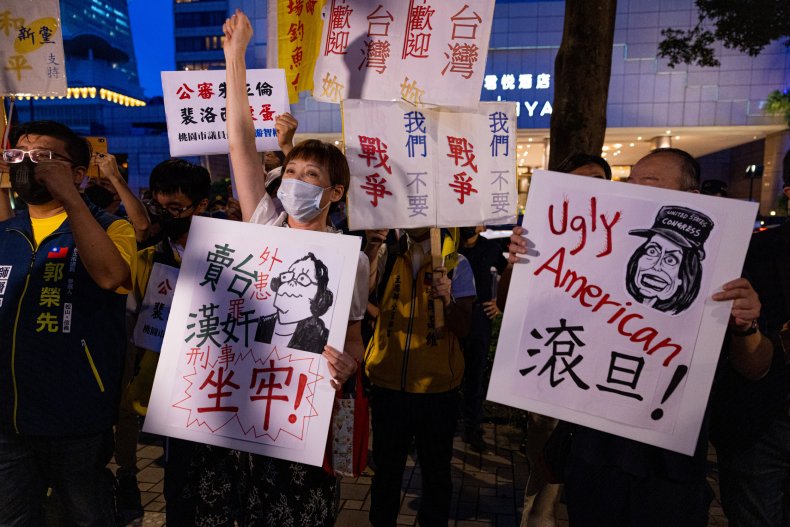
An August 3 editorial in the Global Times underlines the gravity of the situation: “China’s countermeasures will not be one-off but a combination of long-term, resolute and steadily advancing actions.”[6]
Immediately following Pelosi’s controversial visit, China responded by announcing the establishment of six large exclusion zones around Taiwan starting on Thursday, and lasting for four days. In an unprecedented move, three of the six zones penetrate Taiwan’s 12-mile limit. As the Global Times editorial notes, this will be the first of undoubtedly many responses to Pelosi’s visit by China. This escalating clash of economic titans could easily lead to another nuclear flashpoint.
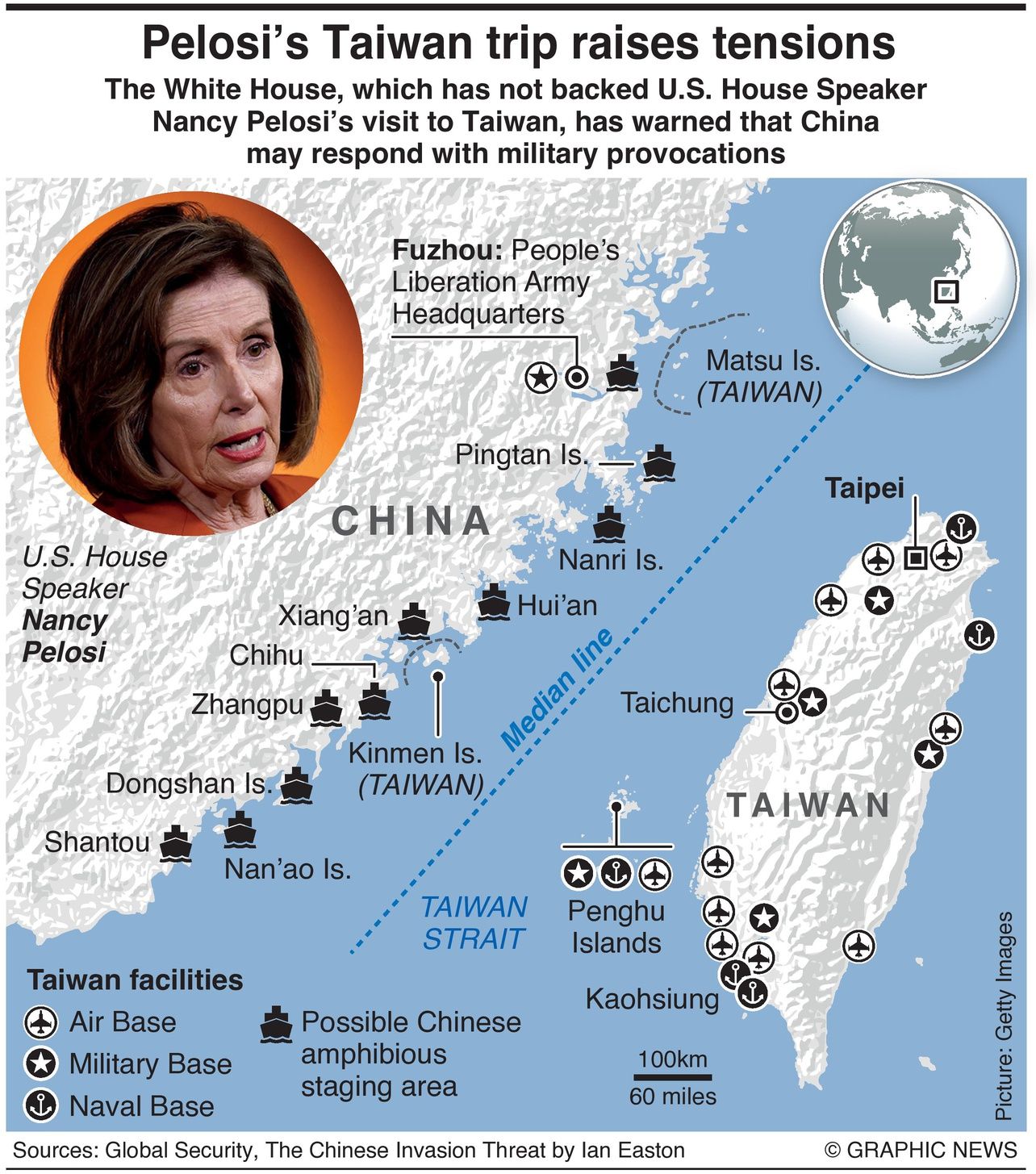
Challenges for the Movement
The challenge for the peace, justice and environmental movements is to quickly organize a broad political base capable of challenging the presently prevailing corporate power structure. Their nearly absolute corporate control over the media, including public broadcasting, complicates our already difficult task, a task made even more difficult by the unprecedented corporate capture of both political parties.
To educate and mobilize the public we must adopt strategies that reflect the current political and technical realities, increasingly emphasizing the inter-connectedness of issues and the importance of networking.
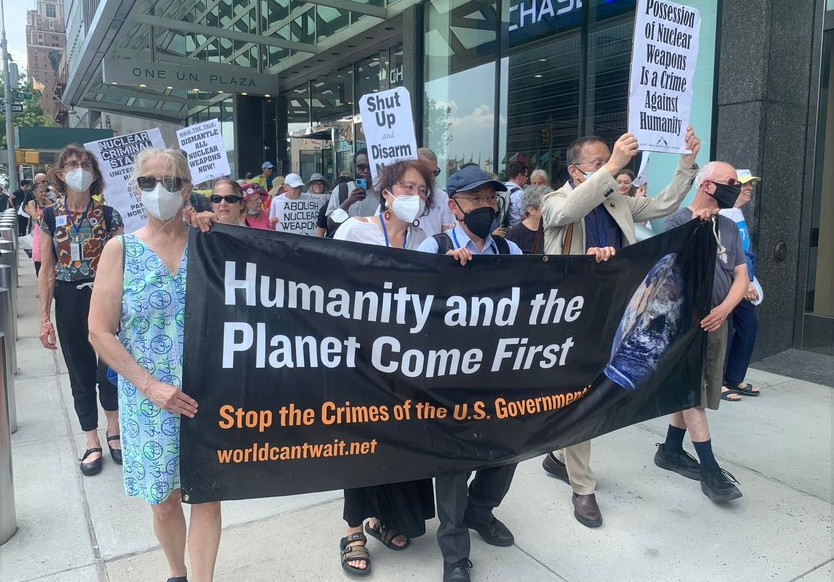
The key to preventing the use of nuclear weapons—an act which will inevitably have calamitous consequences for the entire world—lies in the ability of the anti-nuclear, anti-war, social justice and environmental movements to understand that their issues are inextricably linked. The best strategy for abolishing nuclear weapons is to broaden and strengthen the people’s movement to challenge all aspects of the corporate imperial state.
In Dialectics of War, Martin Shaw writes, “By the time nuclear war is even likely, war-resistance may be largely beside the point. The resistance to nuclear war has to be successful in the period of general war-preparation. The key question is the relationship between militarism and antimilitarism, and the wider social struggles of the society in which nuclear war is prepared.”[7]
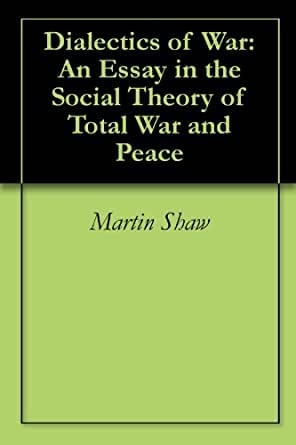

Each anniversary of the atomic bombings provides us a unique opportunity to study and reflect on the horrors of possible nuclear war and the massive destruction already wrought by pursuing nuclear madness.
The Hibakusha (living survivors of Hiroshima/Nagasaki) remind us that any use of nuclear weapons cannot be limited and will not be survivable. Their message is especially urgent as the world faces the “unparalleled catastrophe” prophesized by Albert Einstein at the dawn of the Nuclear Age.

-
Michio Kaku and Daniel Axelrod, To Win A Nuclear War: the Pentagon’s Secret War Plans (Boston: South End Press, 1987), p. 184. ↑
-
Robert Aldridge, The Counterforce Syndrome: A Guide to U.S. Nuclear Weapons and Strategic Doctrine (Washington, D.C.: Transnational Institute, 1978), p. 9. ↑
-
Daniel Ellsberg, “A Call to Mutiny,” Protest and Survive, E.P. Thompson and Dan Smith, Eds. (New York: Monthly Review Press, 1981), p. 1. ↑
-
https://agupubs.onlinelibrary.wiley.com/doi/10.1002/2013EF000205. ↑
-
https://www.theguardian.com/world/2022/aug/02/world-one-miscalculation-away-from-nuclear-annihilation-un-chief-says ↑
-
Martin Shaw, Dialectics of War: An Essay in the Social Theory of Total War and Peace (London: Pluto Press, 1988), p. 102. ↑
CovertAction Magazine is made possible by subscriptions, orders and donations from readers like you.
Blow the Whistle on U.S. Imperialism
Click the whistle and donate
When you donate to CovertAction Magazine, you are supporting investigative journalism. Your contributions go directly to supporting the development, production, editing, and dissemination of the Magazine.
CovertAction Magazine does not receive corporate or government sponsorship. Yet, we hold a steadfast commitment to providing compensation for writers, editorial and technical support. Your support helps facilitate this compensation as well as increase the caliber of this work.
Please make a donation by clicking on the donate logo above and enter the amount and your credit or debit card information.
CovertAction Institute, Inc. (CAI) is a 501(c)(3) non-profit organization and your gift is tax-deductible for federal income purposes. CAI’s tax-exempt ID number is 87-2461683.
We sincerely thank you for your support.
Disclaimer: The contents of this article are the sole responsibility of the author(s). CovertAction Institute, Inc. (CAI), including its Board of Directors (BD), Editorial Board (EB), Advisory Board (AB), staff, volunteers and its projects (including CovertAction Magazine) are not responsible for any inaccurate or incorrect statement in this article. This article also does not necessarily represent the views the BD, the EB, the AB, staff, volunteers, or any members of its projects.
Differing viewpoints: CAM publishes articles with differing viewpoints in an effort to nurture vibrant debate and thoughtful critical analysis. Feel free to comment on the articles in the comment section and/or send your letters to the Editors, which we will publish in the Letters column.
Copyrighted Material: This web site may contain copyrighted material the use of which has not always been specifically authorized by the copyright owner. As a not-for-profit charitable organization incorporated in the State of New York, we are making such material available in an effort to advance the understanding of humanity’s problems and hopefully to help find solutions for those problems. We believe this constitutes a ‘fair use’ of any such copyrighted material as provided for in section 107 of the US Copyright Law. You can read more about ‘fair use’ and US Copyright Law at the Legal Information Institute of Cornell Law School.
Republishing: CovertAction Magazine (CAM) grants permission to cross-post CAM articles on not-for-profit community internet sites as long as the source is acknowledged together with a hyperlink to the original CovertAction Magazine article. Also, kindly let us know at info@CovertActionMagazine.com. For publication of CAM articles in print or other forms including commercial internet sites, contact: info@CovertActionMagazine.com.
By using this site, you agree to these terms above.
About the Author

John Steinbach, activist and author, has written extensively on environmental, economics, energy, social justice and nuclear energy issues.
His works include the map and database Radiation Hazards USA co-authored with his late wife Louise Franklin-Ramirez.
Steinbach’s 2002 article in CovertAction Quarterly (CAQ), “Palestine in the Crosshairs: U.S. Policy and the Struggle for Nationhood,” received a 2004 Project Censored award.
John lives and works in Prince William County, Virginia. He is active in several peace and justice organizations and was the recipient of the 2007 Prince William Human Rights Award.
John can be reached at johnsteinbach1@verizon.net.

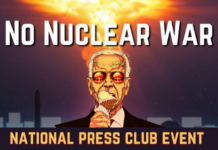
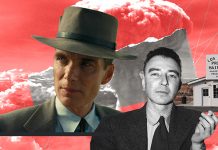
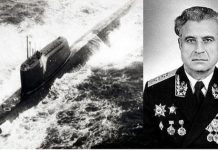


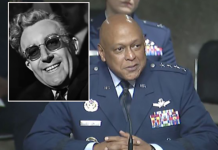

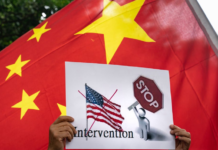
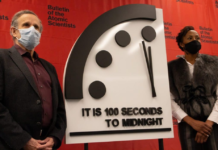

bio-diesle ingredients 1. chloraphyl 2. tan the skin black chemical in 6 months in the dark 3. sealed container , glass breaks. secret additive for1,000 years…raw oak wood. hope this helps.
Screw them.
We seem to forget in what condition the USA was in and what we went through with the Japanese and the million casualties we were facing to invade the island.
Great article, although John Steinbach’s introductory words “President Harry S. Truman’s decision to drop atomic bombs on Hiroshima and Nagasaki set the groundwork for an era of U.S. global hegemony….” are in my humble opinion, somehow misleading. Truman could have never ordered the Japanese massacre ‘on his own’. America’s hegemony is what let to Hitler’s rise and to WWII., Truman was in fact a product of US hegemony. US hegemony in Cuba, (think of Guantanamo), Panama, Puerto Rico, etc, predated Truman.
Franklin Delano Roosevelt , well experienced on political negotiations – always said military operations are not an accident, but agreements between aggressor and victim. I wonder to which extent this could be true in the case of Japan. After all, since the end of the war, America has installed in Japan 31 (THIRTY ONE!!!!) military bases. Isn’t this political friendship and negotiations?
As to the enriched corporations like General Electric, DuPont, Union Carbide, Bechtel and Westinghouse which made hundreds of billions of dollars developing generation after generation of “first-strike” nuclear weapons, we must add the many similar type of companies and corporations in Canada, UK, France, Belgium, Switzerland, Israel, China, Russia, Sweden, and other countries.
Furthermore, USA threatening China is also part of the ‘game’. USA sits (for 75 years now!!) together with China, UK, Russia and France, in the ‘permanent’ UN Security Council. No war in the world happens without their blessing, all under the supervision of their “Secretary” Generl.
77 years ago…a long time ago to remember. But, had Russia dropped these bombs, the (sad) anniversary would NOT be forgotten. Bet on it…
[…] Remembering One of Humanity’s Worst Catastrophes Seventy Seven Years On, by John Steinbach […]
It was the ultra-rich who “advised” (ordered) Truman to drop the A-bombs; these included Allen Dulles and Nelson Rockefeller. Eisenhower and MacArthur were sickened by the use of the A-bombs, and even Curtis Lemay said it was unnecessary, that the war was already won. Steinbach is correct that it was to keep the Russians out of the post-war settlement, and also to create a nuclear arms race. In my view and the view of some others, it was the US Government who gave the Soviets the A-bomb secrets, specifically the create this lucrative arms race and create a “soviet threat.” The Rosenbergs were scapegoats.
Sadly, however, Steinbach parrots propaganda of the ultra-rich: “This is in part due to the existential threat posed by climate change…” This “climate change threat,” dreamed up by Rockefeller et al. in the 1970s, is as much a hoax as the Piltdown Man.
Also, Steinbach gets Pelosi’s Taiwan visit all wrong. This was all theater to distract from the scandal of her hubby’s insider trading. Pelosi’s longtime ally China even helped her out by firing some missiles, and other dramatic saber-rattling. Pelosi, who’s been China’s BFF for decades, couldn’t give a rat’s orifice about Taiwan or America.
and now for the REAL reason i came here…
it’s all well and good that this article was written…if nothing else, it probably informed some people…
but SERiously…what good are written words if the government of ANY nation is insane enough to use nuclear weapons again? just the ecological impact will, at LEAST, decimate most of life on the planet…
and that’s a really optimistic projection…
so now what? everyone throws in their two cents and goes home happy? and that’s reduced to possibility of the use of these weapons?
if i have a point, it’s that it’s out of our hands…no matter HOW much we’d like it to be otherwise…
my advice is the same i’ve lived by since i was around 14 yrs old…and learned about what had really happened just a few years before, while my parents and i were at my uncle’s home…i was outside playing with my cousins…and i came inside to get a glass of water…the adults were all gathered in the living room around the television…they seemed…scared…but when i asked what was going on they said, ‘oh nothing…
go back outside and play…’. i knew they were lying, but…it wasn’t as if i could pry the truth out of them…
then, maybe 2 or 3 yrs later, in high school, the subject was ‘the Cuban Missile Crisis’…and i learned that an atomic war had come very, very close to happening…aside from that i learned more recently that, THEN, russia’s missiles didn’t have the capability of reaching the US…but they sure would’ve made a mess out of Europe…which is where i live now, and have for over 20 yrs. the decision i came to on that day in the classroom, though, was that i would live my life as if there were no tomorrow…squeezing out of each moment all that i could…without, hopefully, doing anyone else any harm in the process of doing so…
really, as many of you know…there’s little else we should do with our lives…none of us really knows or has control over our ending/s…
in conclusion…i wish you and yours a healthy existence, regardless of how long that might be…
except for the person who posted those ‘make money’ ads above this…